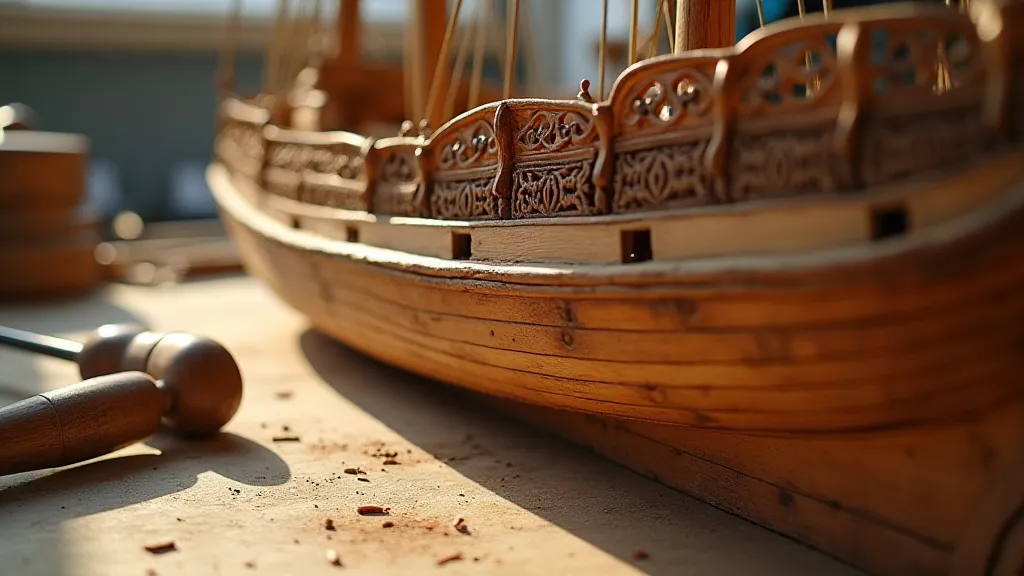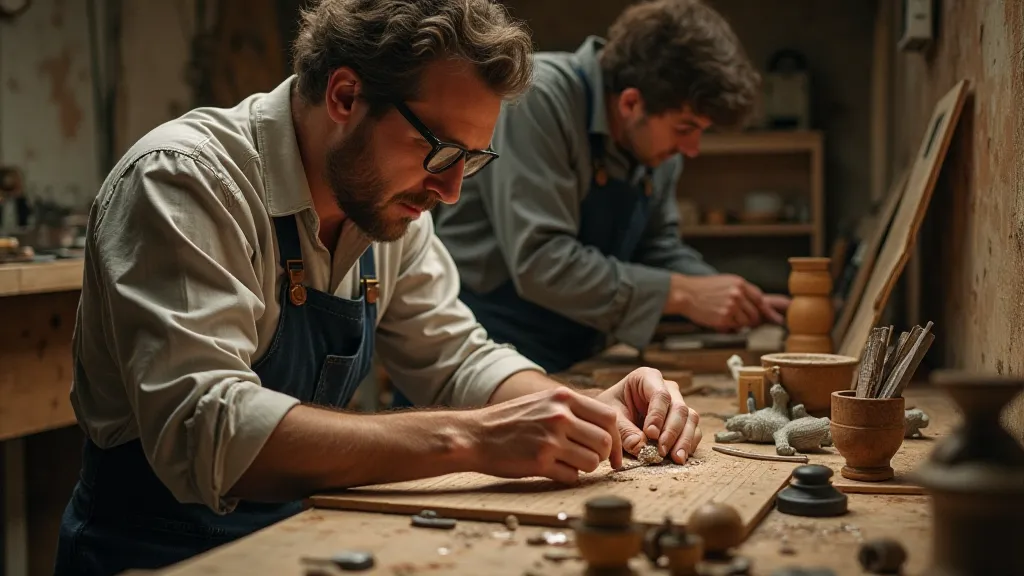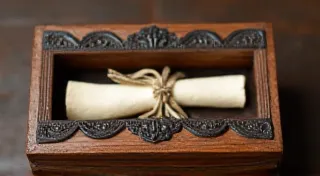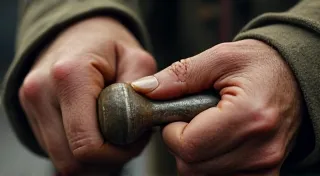From Dream to Draft: Transcribing Visions into Wood
There's something profoundly moving about holding a piece of history in your hands. Whether it’s a well-worn leather-bound book, a faded photograph, or a meticulously crafted wooden model ship, these objects whisper tales of lives lived and skills honed. For me, building wooden model ships isn't just a hobby; it's an act of connection – a bridging of the centuries, a dialogue with the artisans who built the originals, and an attempt to recapture a vanished world. The process of translating a mental image – a vision of a proud frigate battling a storm, or a stately clipper sailing into a bustling port – into a tangible, three-dimensional object is a deeply rewarding, and sometimes challenging, journey.
My own fascination began with a small, battered model of the HMS Victory I found in an antique shop years ago. It wasn’s perfect. Years of handling had dulled the varnish, and a few spars were missing. But it held an undeniable aura, a silent testament to a time when ships ruled the seas and the skills required to build them were a point of national pride. That single model ignited a passion that continues to burn.

The Seed of an Idea: Historical Context and Initial Research
The first step isn’t about wood or glue, but about understanding. Before a single piece of timber is cut, a proper journey into the ship’s history is essential. Knowing the original ship's purpose – a troop transport, a merchant vessel, a warship – informs every decision you make during the modeling process. Researching its construction details – hull design, rigging, sail plan – is crucial for accuracy. The more you understand about the real ship, the more informed your model will be. Resources abound, from historical societies and maritime museums to specialized online forums and detailed ship plans.
Consider the *Cutty Sark*, for example. It wasn's just a tea clipper; it was a symbol of the frantic race to transport tea from China to London, a competition that drove innovation and defined an era. Understanding the pressures and the context surrounding its construction – the demand for speed, the limitations of the technology – helps you appreciate the design choices that were made. Similarly, understanding the historical context of the *Santa Maria*, Columbus's flagship, allows you to comprehend the compromises inherent in its construction – compromises born of necessity and the limitations of the materials available at the time.
From Plans to Form: Design and Scaling
Once you’ve immersed yourself in the ship’s history, it's time to translate that knowledge into a practical design. Obtaining accurate ship plans is paramount. These plans, often referred to as "half-hulls" or "sheer plans," provide the essential lines and dimensions you'll need. There are many sources for these plans, ranging from publicly available documents to commercially produced sets. Understanding how to read and interpret these plans is a skill in itself, and one well worth developing.
Scaling is another crucial consideration. The scale you choose will affect the level of detail you can incorporate, the size of the finished model, and the complexity of the construction process. Smaller scales are more challenging to execute with precision, while larger scales require a significant investment of time and materials. The choice depends on your skill level, the available space, and your overall objectives. A 1:72 scale model, for instance, allows for a good balance of detail and manageable size for many modelers.
The Language of Wood: Materials and Tools
The selection of materials is another critical step. Traditionally, models are built using hardwoods like mahogany, walnut, and cherry, chosen for their beauty, workability, and durability. Basswood is also a popular choice for its softness and ease of carving. The quality of the wood is paramount – straight grain, absence of knots, and consistent density are all desirable qualities. Careful selection will minimize cracking and warping during the construction process.
The tools required for wooden model ship building are relatively simple, but the skill to use them effectively is a lifetime pursuit. Sharp knives, chisels, saws, and a variety of clamping devices are essential. Patience and a steady hand are more valuable than any specialized equipment. Learning to sharpen your tools is a crucial skill that will dramatically improve the quality of your work. The subtle rasp of a well-honed chisel against wood is a sound that any serious model builder will come to appreciate.

The Patient Dance of Construction: Hull, Deck, and Rigging
The construction process itself is a patient dance, a series of carefully executed steps that gradually transform a pile of timber into a three-dimensional representation of a historical vessel. The hull is typically constructed using the "planking" method, where thin strips of wood are carefully glued to a framework of ribs and stringers. The hull’s shape is refined through a process of sanding and fairing, a demanding task that requires a keen eye and a steady hand.
The deck is another critical element, requiring precise alignment and meticulous detailing. The arrangement of deck planks, hatches, and other features must be accurately replicated to capture the essence of the original ship. The rigging – the network of ropes and wires that controlled the sails – is arguably the most challenging aspect of model ship building. It requires a deep understanding of nautical terminology and an exceptional level of dexterity.
Beyond Accuracy: Capturing the Spirit
While accuracy is important, a truly exceptional model ship goes beyond mere replication. It captures the *spirit* of the original vessel – its strength, its elegance, its history. This is achieved through a careful attention to detail, a deep understanding of nautical practices, and a willingness to embrace the challenges that inevitably arise. A slight imperfection, a subtly weathered finish – these can add character and authenticity to the model, imbuing it with a sense of life and history.
Building wooden model ships isn't just a hobby; it's a journey of discovery – a exploration of history, craftsmanship, and the enduring power of human ingenuity. It’s a meditation on time, a connection to the past, and a testament to the enduring allure of the sea.






